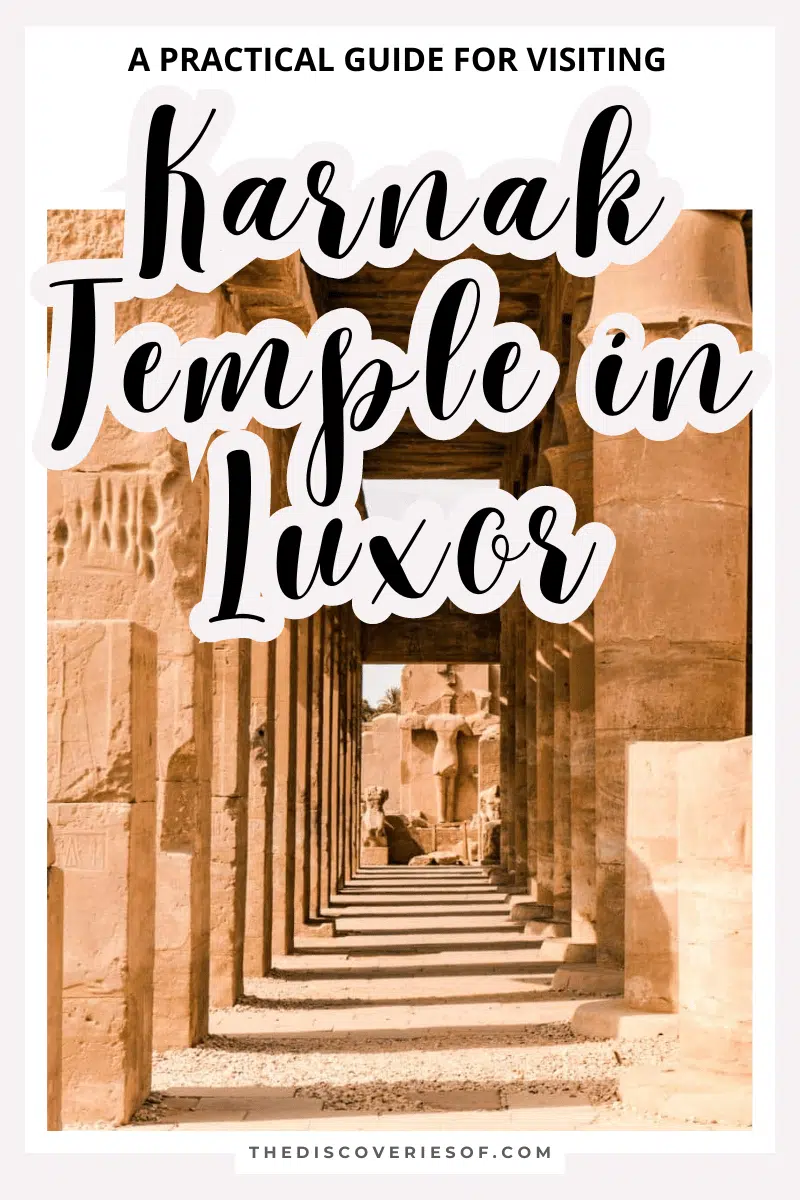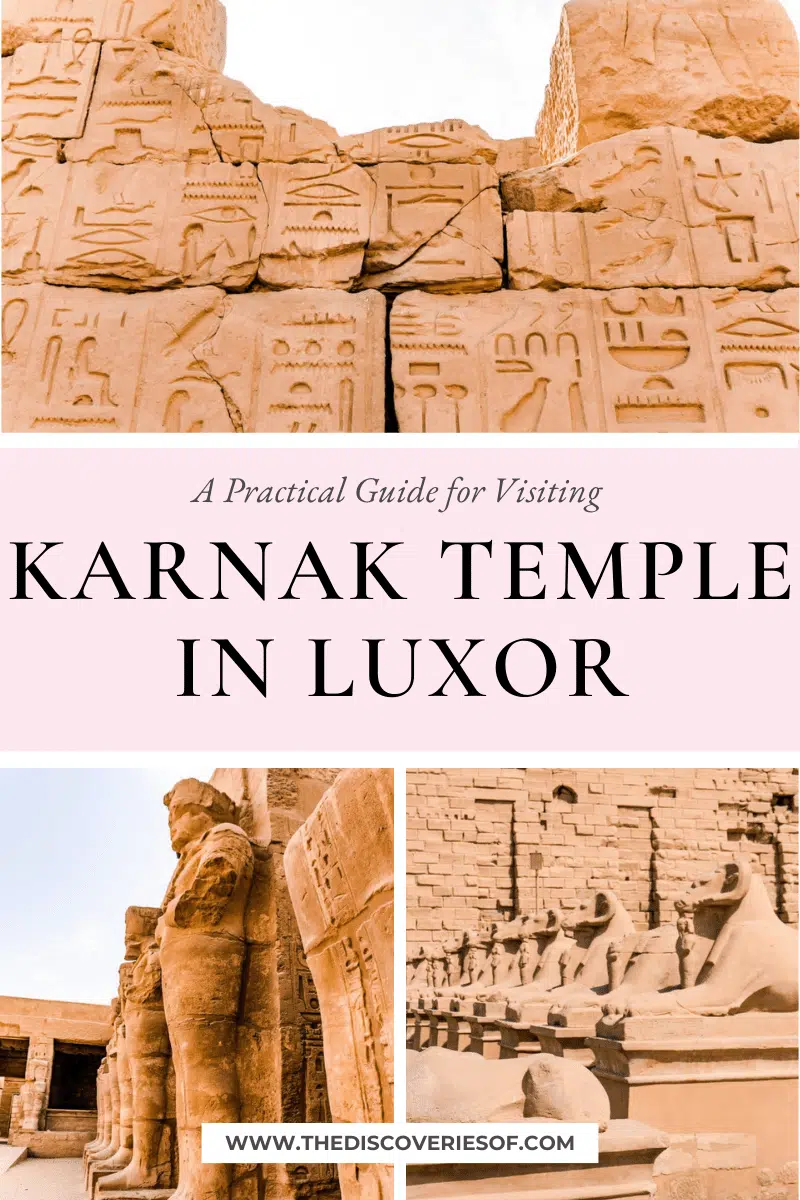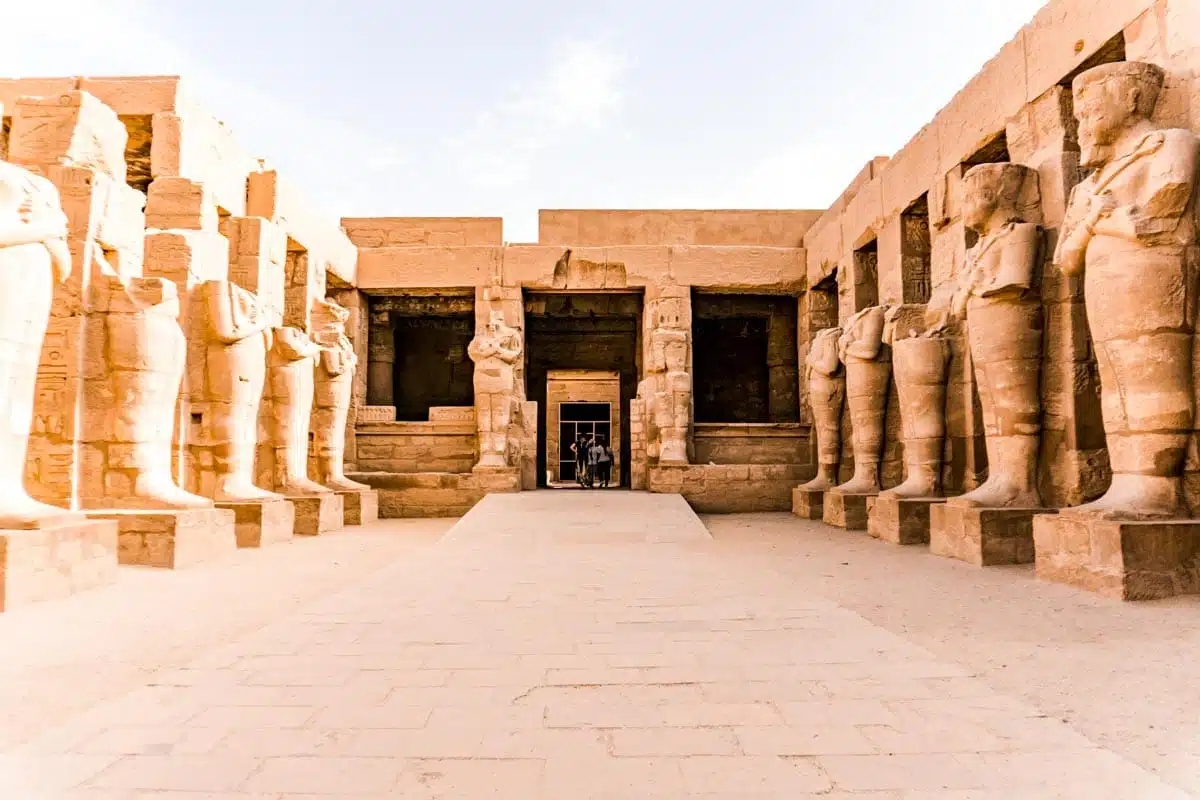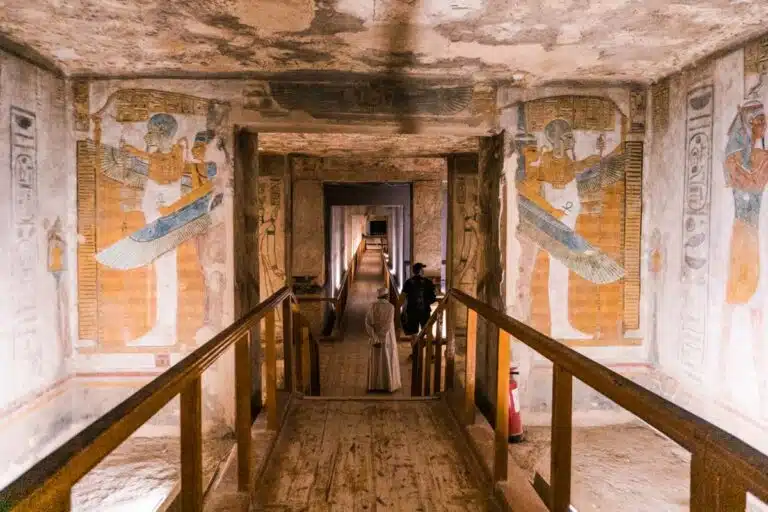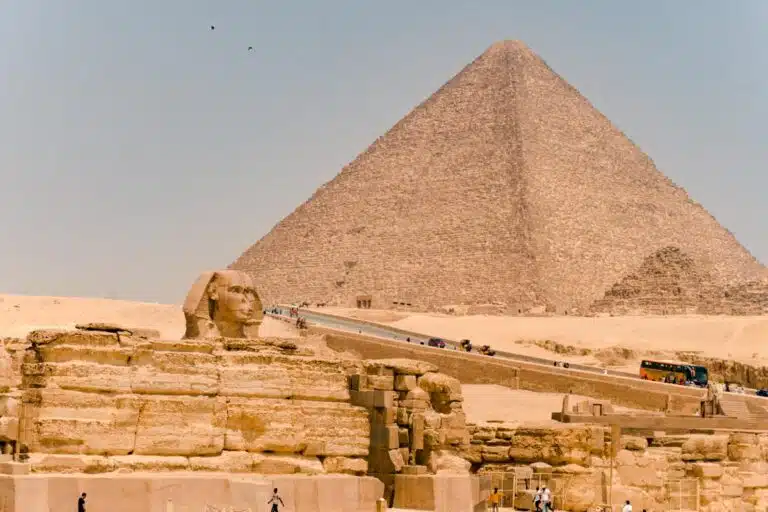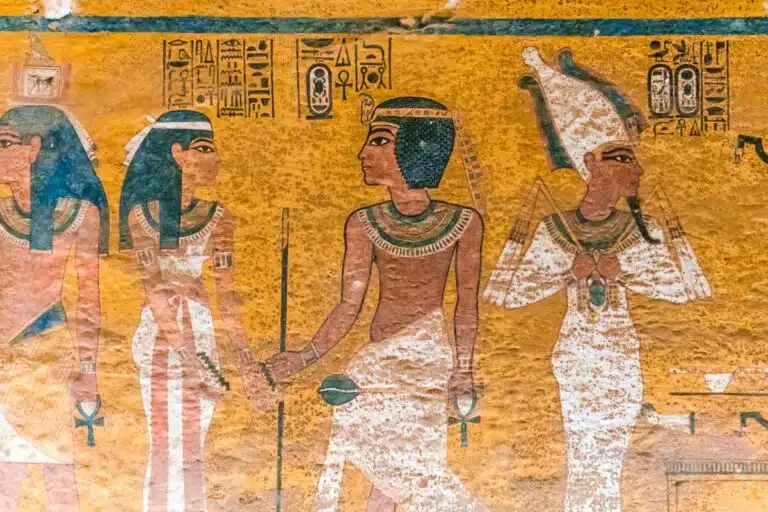Egypt’s Karnak Temple is an imposing display of ancient Egyptian artistry and architecture. Get ready to delve into this fantastic destination that is sure to blow your mind.
If you ever question whether the Ancient Egyptians liked to show off, Karnak should give you a clue.
This expansive temple complex is unparalleled in terms of scale and detail… I guess that anything that took nearly 2,000 years of construction should be anything but underwhelming.
Planning your visit to Luxor? You have to visit Karnak. It really is that simple.
But what should you expect when you get there? And how do you plan your trip? Read on to discover…
Why Visit Karnak Temple?
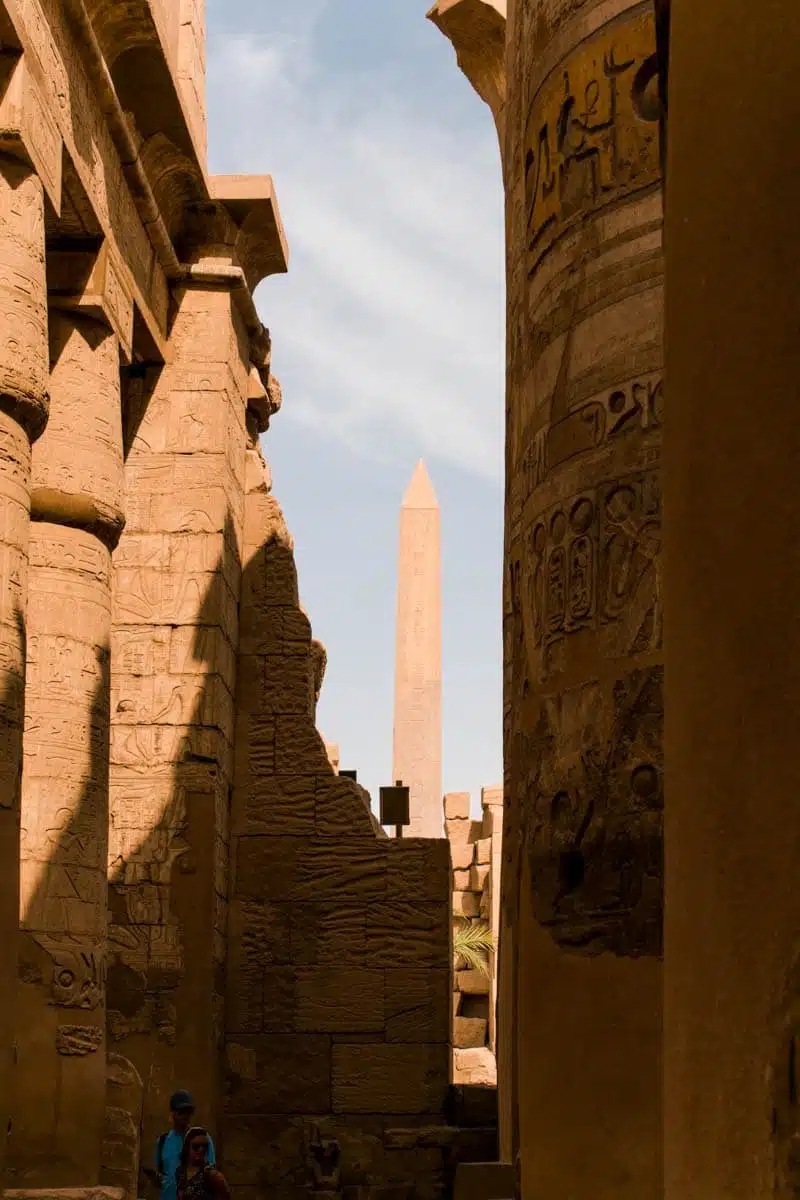
If you’re a bit stuck on why you should visit Karnak temple, I’ll save you the effort. Why wouldn’t you want to visit one of the most impressive Ancient Egyptian landmarks still standing?
Sure, other sites like the Valley of the Kings and Abu Simbel share equally in the majesty of ancient Egyptian splendour, but all roads lead to Karnak, maybe because it’s the largest religious complex ever built.
Top Tip: Want to really delve into the history of Karnak? Book this half- or full-day Luxor tour
What Is the Karnak Temple Complex, and Why Does It Exist?
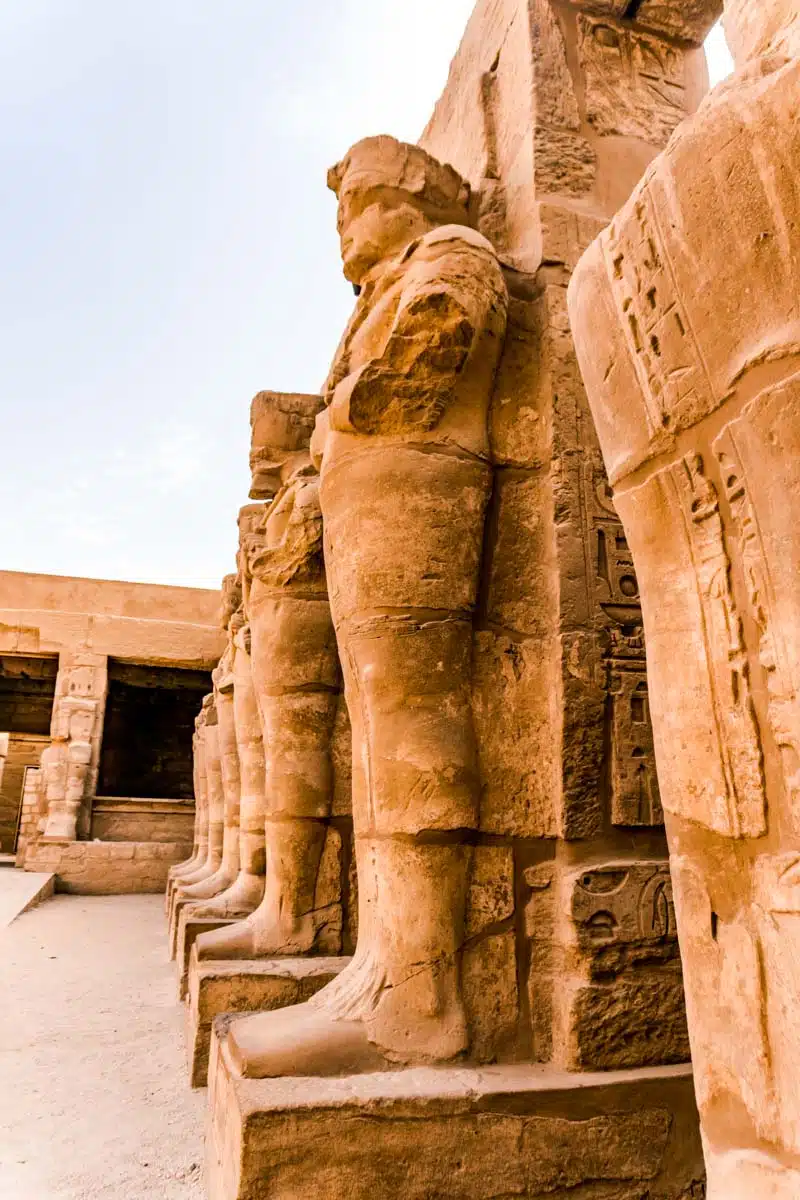
To precisely define what Egypt’s Karnak temple is can be a bit tricky. Not impossible, though. Archaeologists suspect that Karnak had humble (yes, humble) beginnings. It started as a collection of temples dedicated to the Theban deity triad consisting of Amun, Mut, and Khonsu.
But, with what can only reflect the concept of ‘bigger is better’, the complex quickly exploded into an enormous one-stop location for everything religious.
Karnak became the epitome of worship sites for the entirety of ancient Egypt. This is due to the unparalleled festivals dedicated to many seasons, especially harvest periods.
What You’ll See Inside The Temple of Karnak
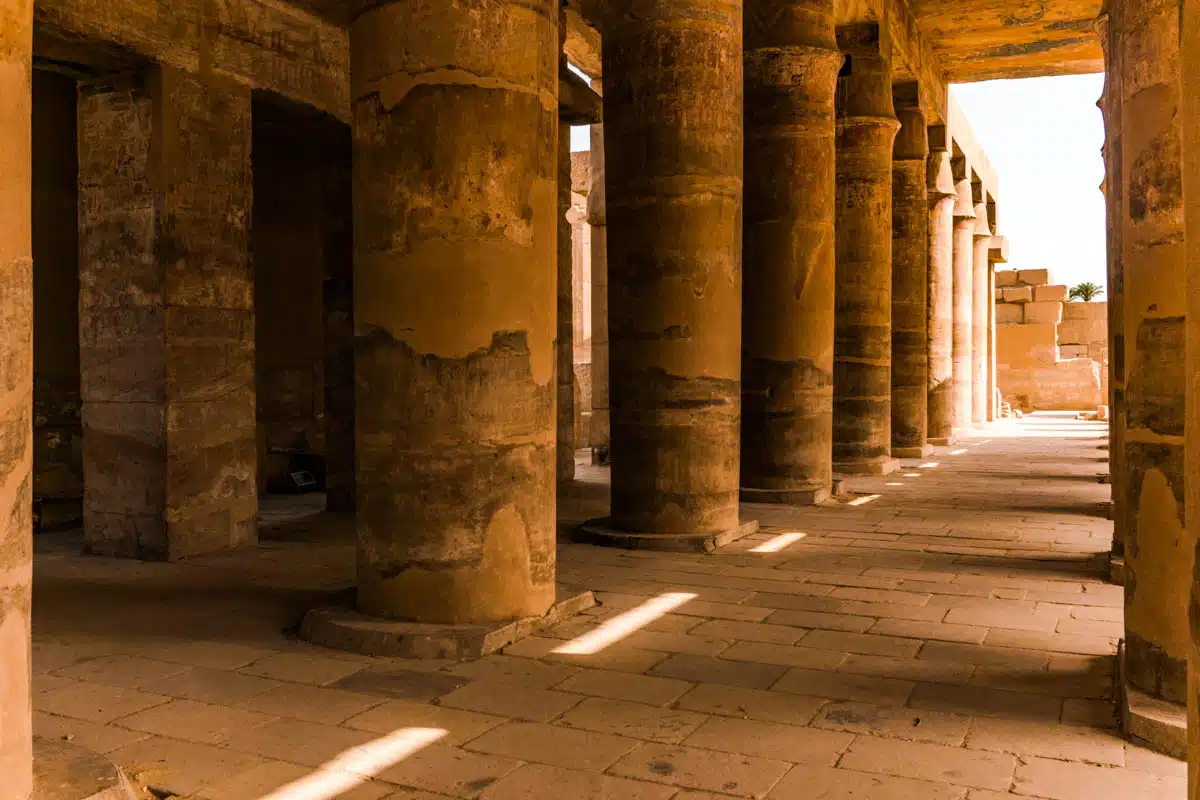
So, you’re sold on adding a guided tour or solo mission to this Egypt temple, but what can you expect to find once there? Well, you’re in for probably the grandest showcase of monolithic structures — second only to those at Abu Simbel.
One can only understand the grand scheme of Karnak once at the site itself. So, let’s go on a deep dive into Karnak – Egypt.
The Entrance Pylon
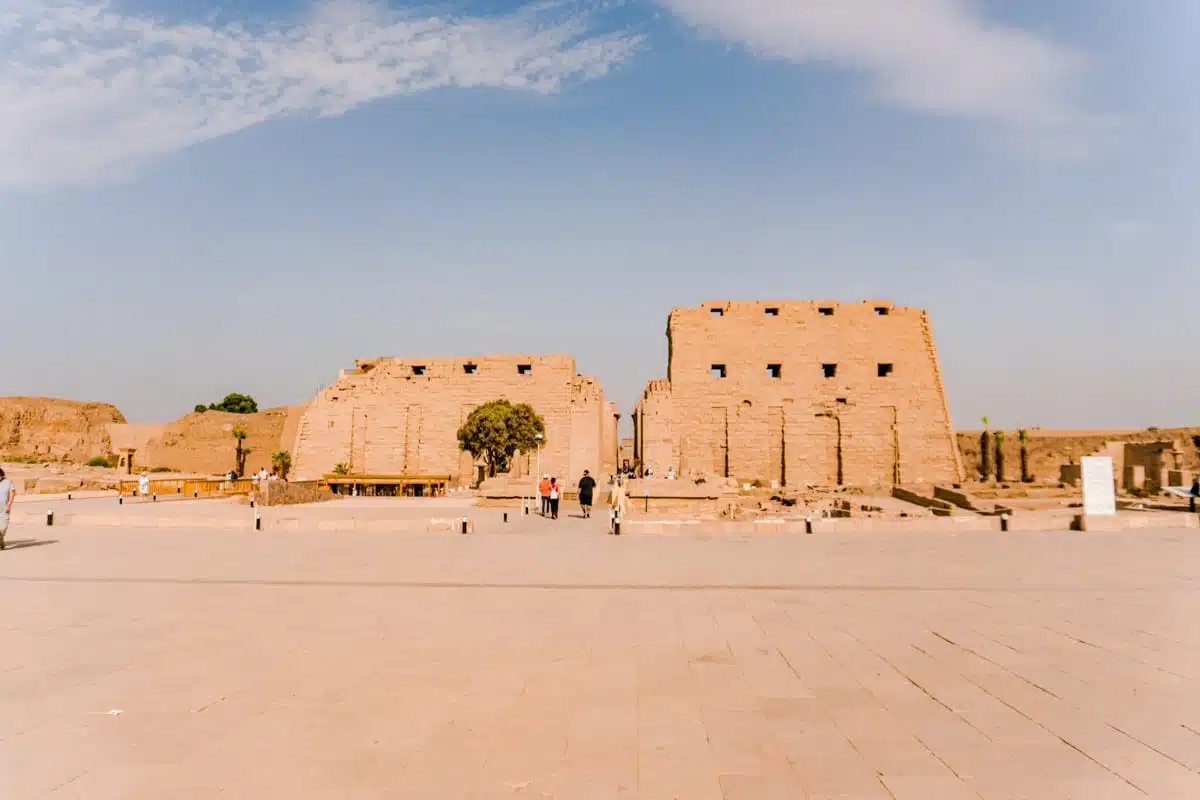
Now, while all of the pylons at Karnak are noteworthy feats of Egyptian architecture, there is one I must highlight. The last pylon constructed at Karnak in Egypt is the first one you’ll see when approaching the complex.
Archaeologists note that, although never completed, it was most likely built during the Kushite Dynasty. As you approach the pylon from outside the complex, you’ll see two obelisks flank the main landing.
Erected by Seti II, the path leads down a small flight of stairs and onto a lane, both sides lined with ram-headed sphinxes. Between the front paws of each of these is a small statue of Ramses II.
Temple of Ramses III
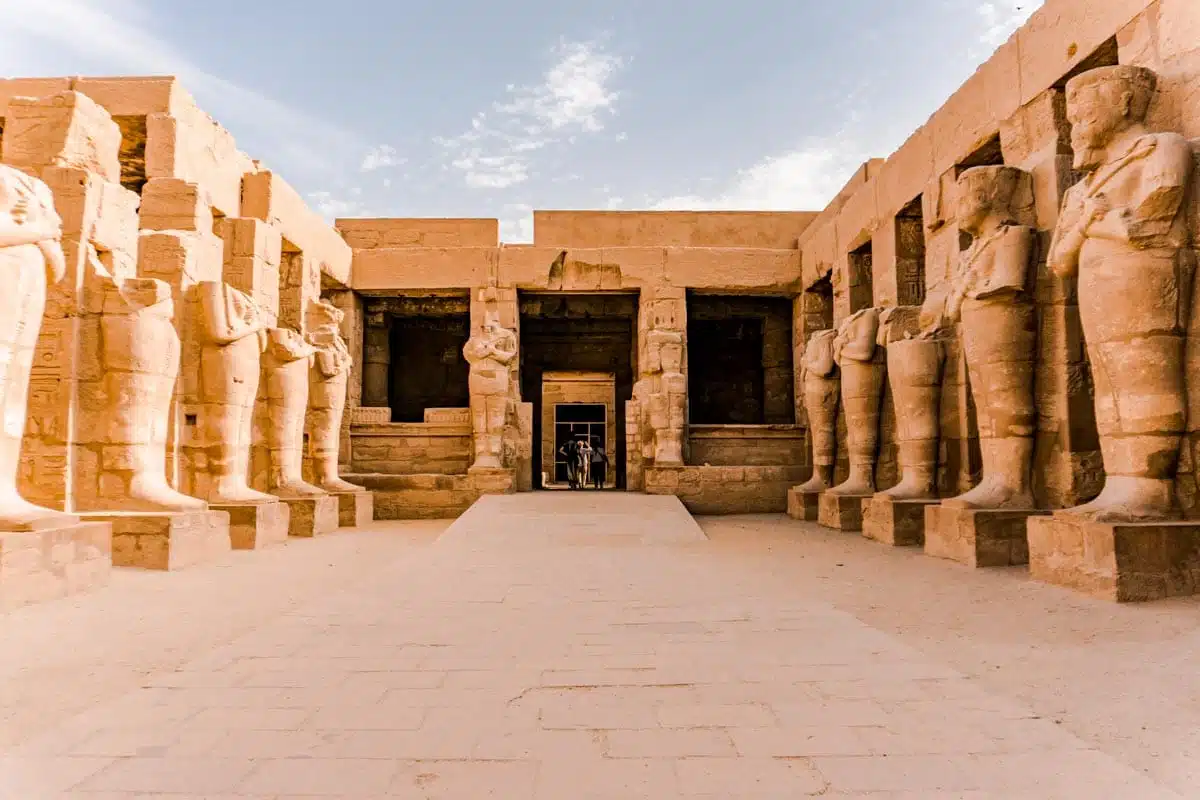
As you cross through the entrance pylon, you can claim your mark within the grounds of Karnak. The area past the pylon is a large open-air courtyard referred to as the Hypostyle Court.
To the right lies the Temple of Ramses III. Researchers consider this temple to follow the traditional New Kingdom design and construct.
Approaching the temple, an entrance pylon will meet you with two six-metre tall Redstone statues flanking each side. Still intact are images of Ramses III in battle and victory over invading armies.
Osiride statues of the pharaoh line the first courtyard. Although faded by time, the crown of the south (in red) and the crown of the north (in white) are still visible atop the heads of these statues.
The temple layout leads to the inner sanctuary (sometimes called the holy of holies). Once inside this chamber, you’ll have access to the three sanctuaries of Amon, Mut, and Khonsu.
The Great Hypostyle Hall
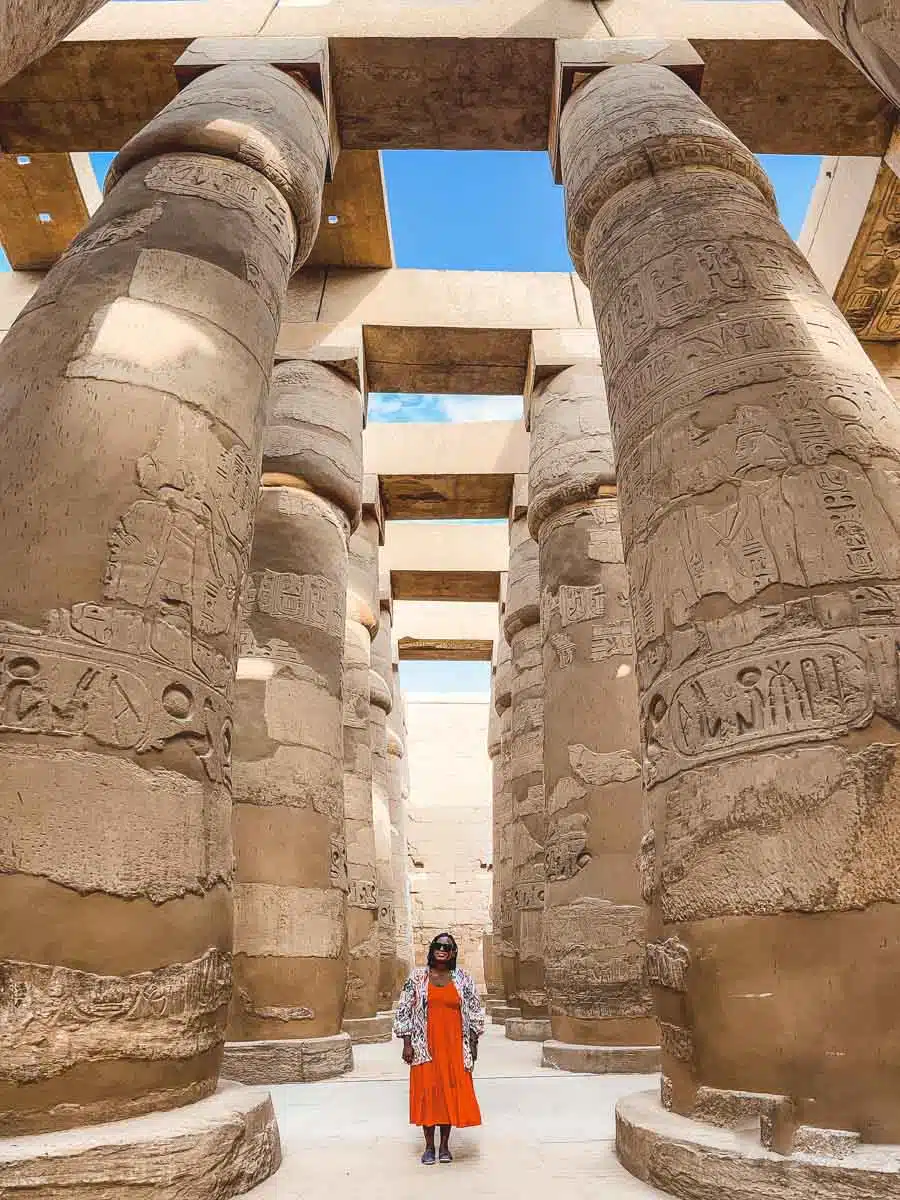
The Great Hypostyle Hall is the crown jewel of this ancient Egyptian temple. It has 134 enormous sandstone columns supporting the roof and twelve columns at the centre towering 20 metres.
Near the top of most of these impressive columns, you’ll still spot traces of the highly detailed and colourful paintings that originally decorated them.
The hall’s construction started during the reign of Seti I. Depictions of him and his successor, Ramesses II, showcase their victories over Libian, Syrian, and Levant armies.
The Third Pylon
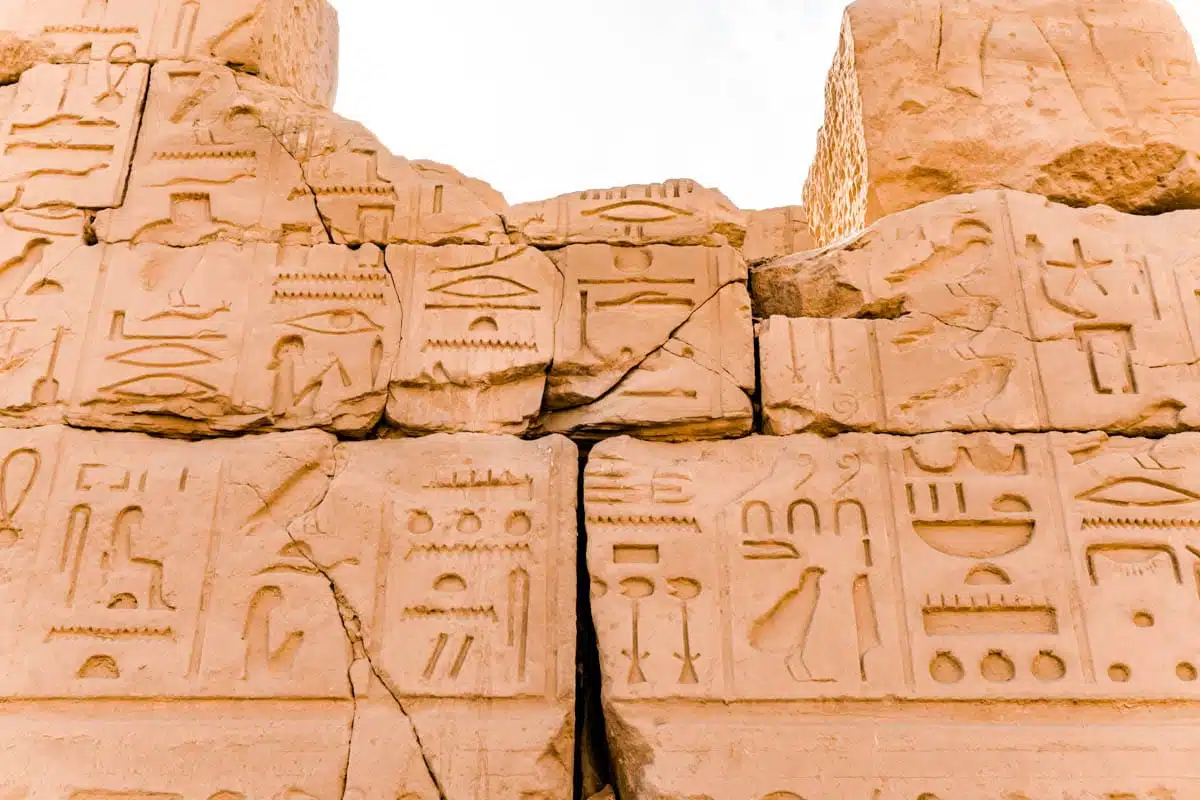
The construction commissioned by Amenhotep III was the original entrance to the great temple of Amon-Ran — the third pylon.
What makes this part of Karnak so intriguing is the discovery of hundreds of blocks used to build earlier structures at the core of this pylon.
After venturing through this gateway, you’ll enter the central courtyard. Thutmose I made the first recorded alterations to the original shrine of Amun-Ra here during the 18th dynasty.
During his reign, he erected the first obelisks at Karnak — one of which still stands in the courtyard in all its original glory.
Hatshepsut’s Standing Obelisk
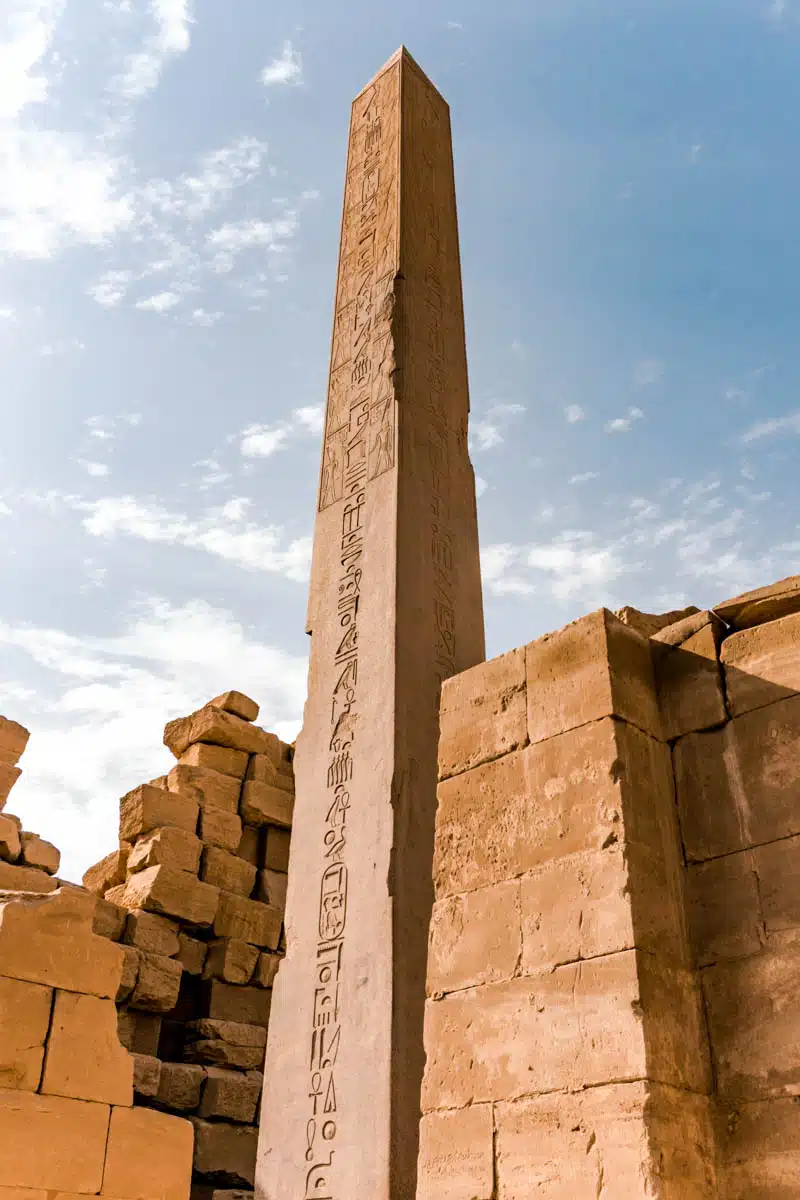
Rising in between the fourth and fifth pylon is Hatshepsut’s Standing Obelisk.
Made out of a singular block of pink granite, it is one of the most stunning pieces of Karnak. As one of the two tallest standing obelisks in the world, it towers to a whopping 29.5 metres.
This obelisk, erected in the 16th year of her reign, weighed nearly 330 tons. Transported all the way from Aswan, Egypt, according to the inscriptions you’ll get to see on the base, it took only seven months.
The Sanctuary
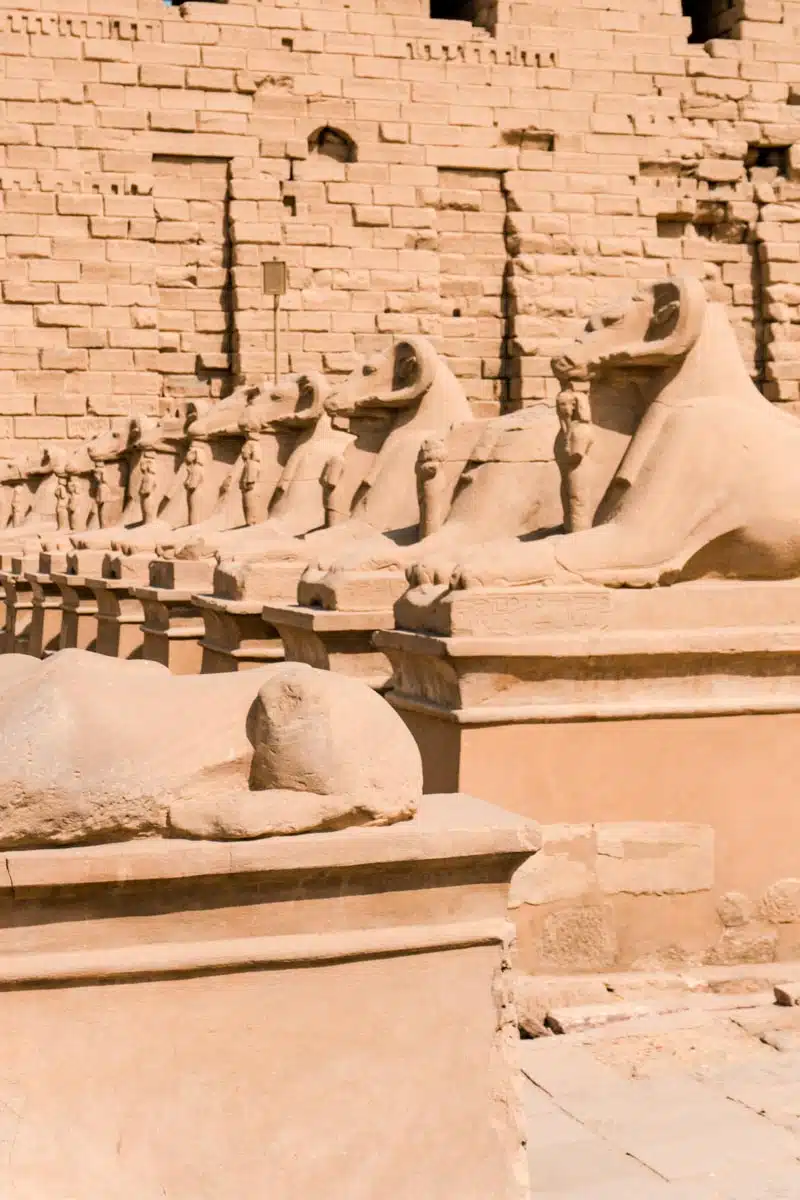
The sanctuary lies to the rear of the inner temple grounds. You’ll spot it after passing through the sixth pylon.
Once inside, you can marvel at the pink granite walls, all adorned with depictions and reliefs of past pharaohs and nobility.
As you pass through the sanctuary, looking at the roof is worth the stretch of your neck. Set against a pitch-black painted ceiling are golden stars. Depictions of Philip Arrhidaeus (half-brother to Alexander the Great) also feature.
The ceiling showcases his crowning, presentation to the gods, and his seat at the offering table.
As the corridors of the sanctuary lead around the inner chamber, you can catch glimpses of detailed reliefs showcasing the ascension of the pharaoh.
The Great Festival Temple of Thutmose III
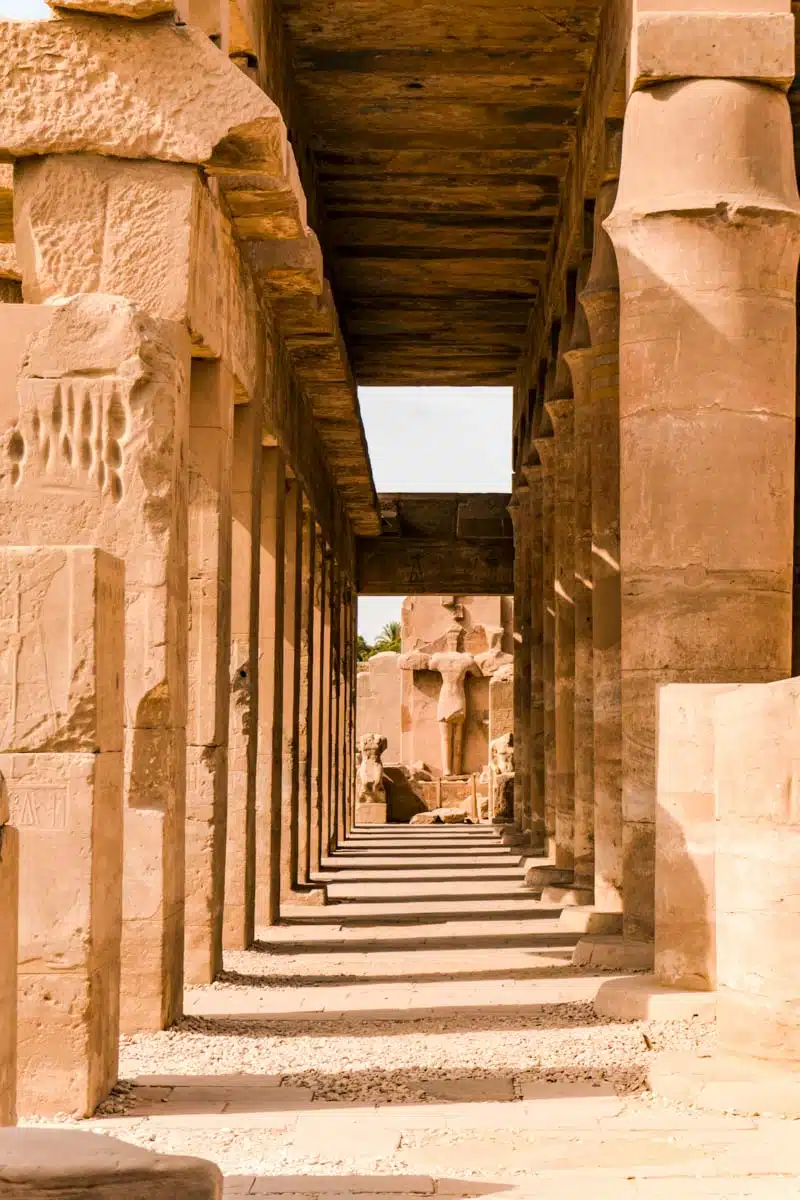
Built to honour Amon-Ra, the Great Festival Temple of Thutmose III lies in the eastern part of Karnak. As one of the pharaohs of Egypt to have claimed victory in seventeen (or so) wars, Thutmose III deserved his place in the house of the gods.
This exquisite temple is 44 metres wide, with 22 columns supporting the structure. Around this temple are an astonishing 50 halls and chambers — each more unique than the previous one. Very few are open to the public.
All of these lead back to the central courtyard. If you’re a history buff, and because you’re reading this, I know you are, here’s a fun fact. Included in this section of Karnak lies the famous Karnak Cachette.
Discovered in 1904, archaeologists found thousands of stone sculptures, sphinxes, and metal and bronze items here.
The Sacred Lake
Leading east through a doorway, between the 7th and 8th pylon, lies the massive Sacred Lake. This is where priests would come to purify themselves and conduct numerous religious rites.
Walk around the lake as you get an even better view of the magnitude of Karnak. While on the left path that faces Hatshepsut’s Obelisk, you can catch a glimpse of the upper part of said obelisk.
After taking in the scenery, you can proceed to the 9th and 10th pylons. Built during the reigns of Tutankhamun and Haremhab, this path leads to the temple of Mut (this site is still an ongoing excavation area and closed to the public).
Temple of Khonsu
To the west of the southern collection of buildings is the Temple of Khonsu. The moon god Khonsu is the son of the Theban Triad, and we have Ramses III to thank for his temple.
Ramses IV, Ramses XII, and the usurper priest, Herihor, completed the temple during the 20th dynasty.
Kept safe here is an essential part of Egyptian history in the reliefs on the interior and exterior walls of the temple. This depicts the era in which transmission of pharaonic power from royal bloodlines went over to the high priests of Amon.
Karnak’s History
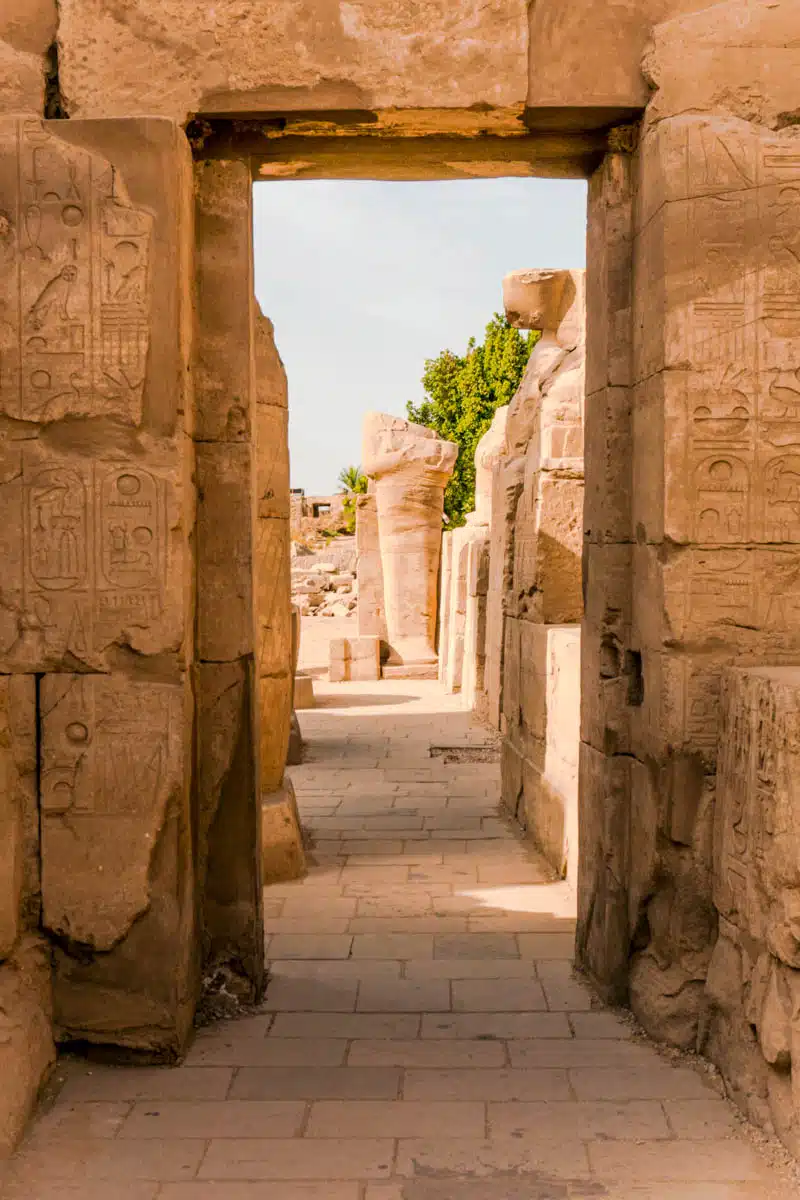
Although the jury is still out on when exactly construction at Karnak started, researchers point to the reign of Wahankh Intef II. This would mean that the site we know as Karnak today came into existence roughly 4000 years ago.
The first structure at Karnak was that of an eight-sided sandstone column, which bore the name of Amun-Ra. Historians say this must’ve meant that a temple had stood here during this time. It soon expanded to a temple precinct up until the New Kingdom.
It expanded greatly between 1550 and 1070 B.C., with many of the most famous structures coming to life during this time. Construction ended abruptly when Rome conquered Egypt some 2000 years ago.
Top Facts About Karnak Temple
30 Pharaohs Contributed to Karnak
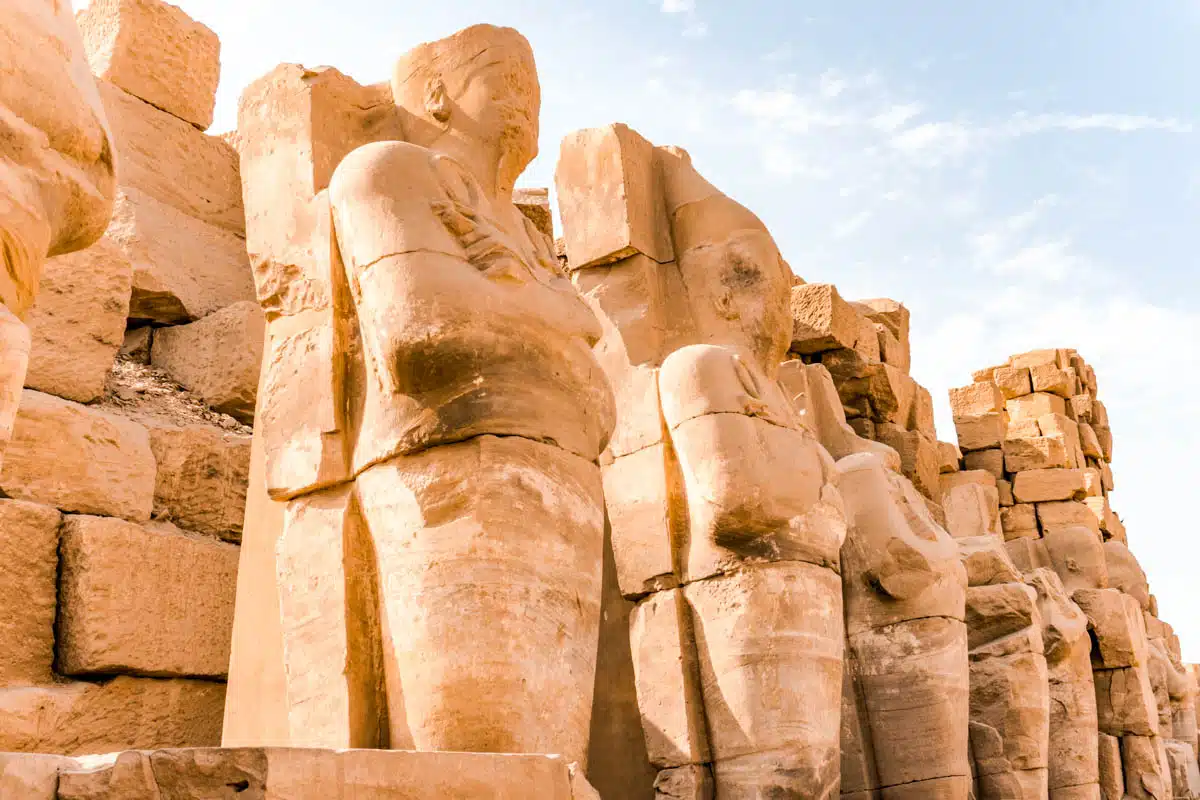
During the 2000 years of construction, approximately 30 pharaohs had a hand in the building of Karnak. This allowed the site to reach its immense size, complexity, and diversity.
An Open-Air Museum
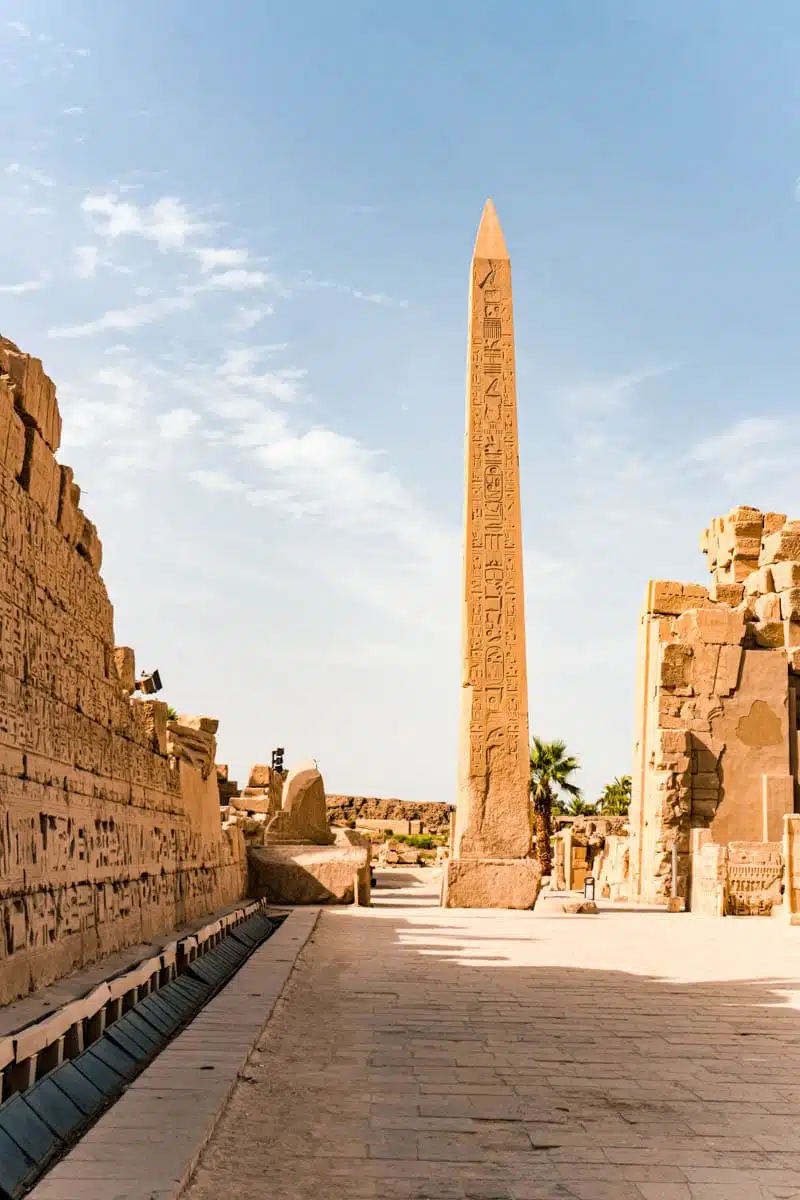
This temple in ancient Egypt is one of the world’s largest open-air museums and the largest ancient religious site (250,000 square metres).
The Hypostyle Hall is Absolutely Enormous
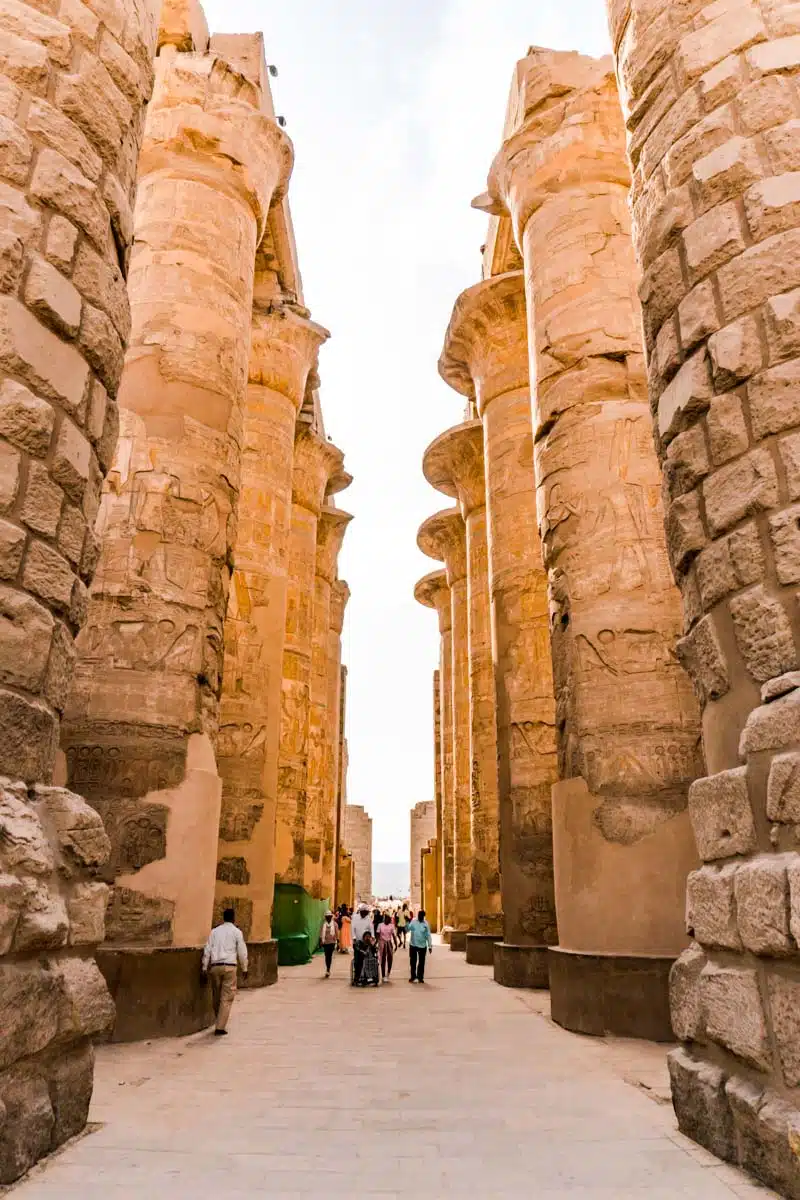
In size, the Great Hypostyle Hall reaches 54,000 square feet. It is so big that the entire Notre Dame Cathedral could easily fit inside it.
It Takes a Village (Or Thousands of Enslaved People)
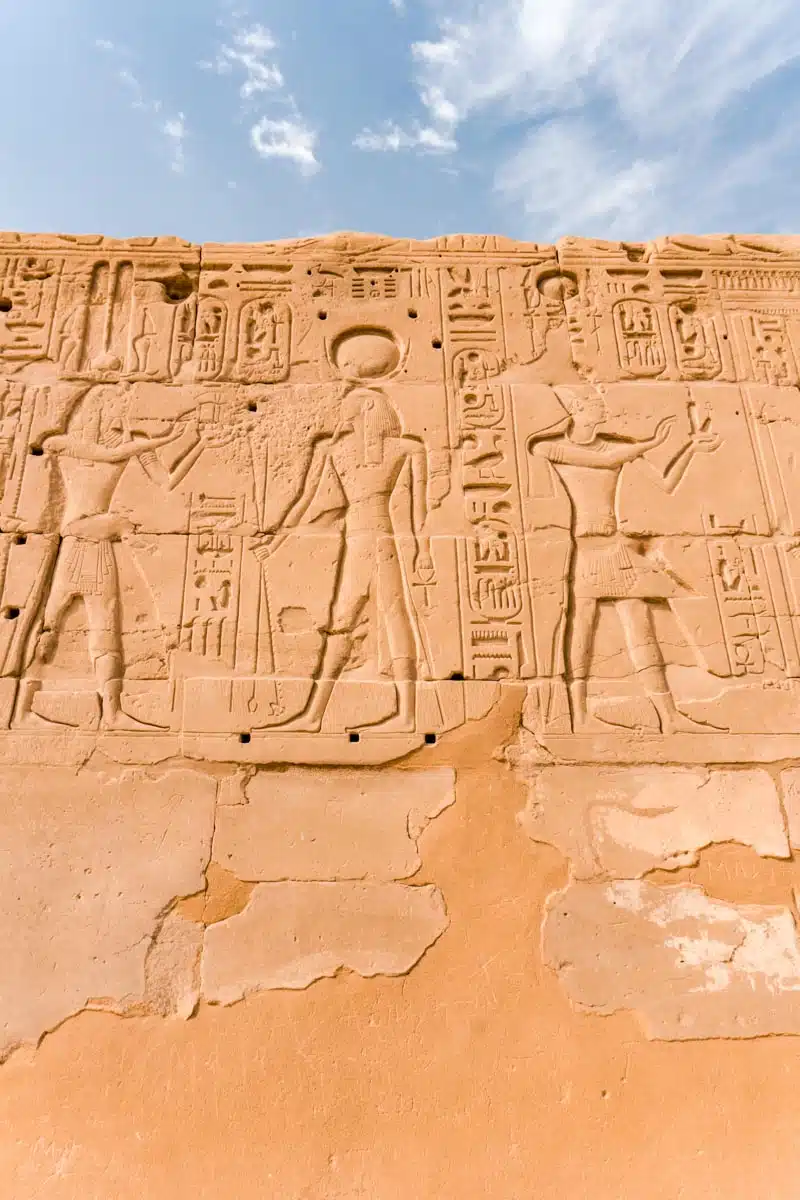
Nearly 80,000 slaves and servants had the task of worshipping Amon-Ra at Karnak. They erected over 5,000 statues in his honour.
Hatshepsut Was Crazy Ambitious
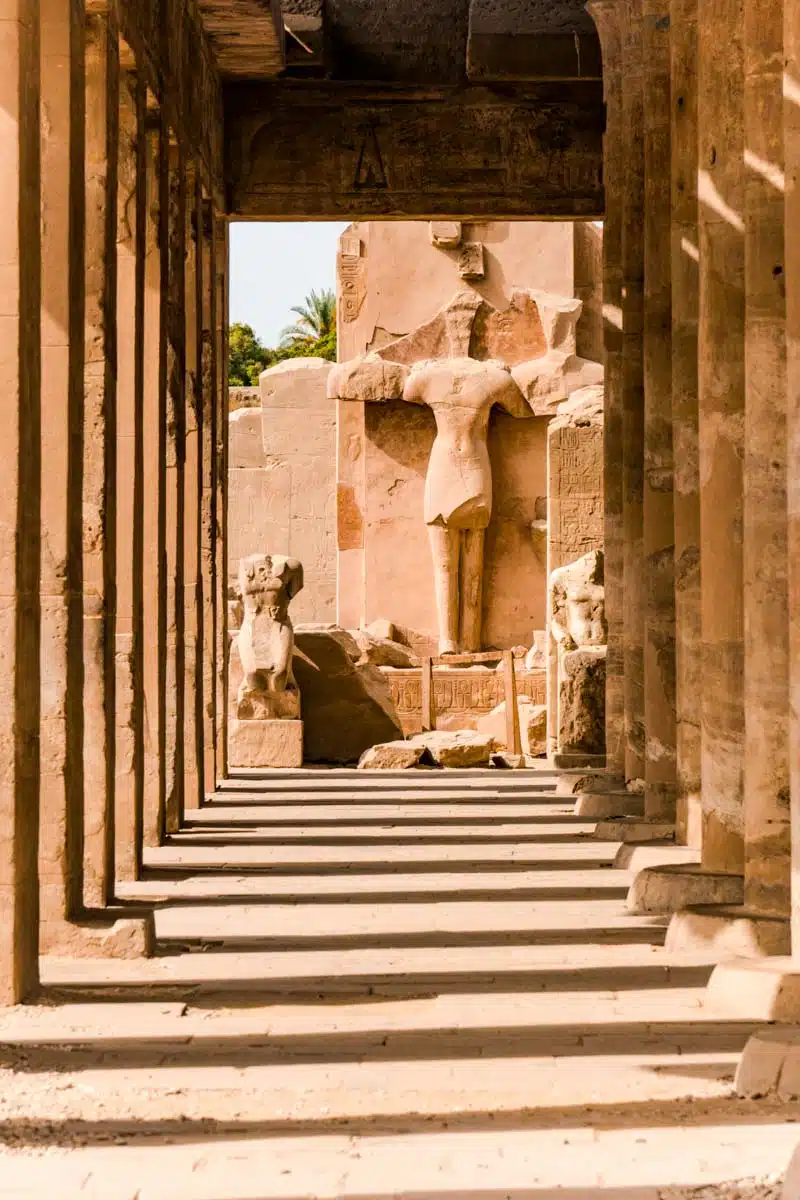
Known as one of ancient Egypt’s most prolific queens, this woman was quite ambitious.
Initially planning to construct a second obelisk in her honour, it would have stood at 42 metres and would weigh more than 200 African elephants.
PS – you should check out Hatshepsut’s Mortuary Temple on the West Bank too
Planning Your Visit to Karnak Temple, Egypt
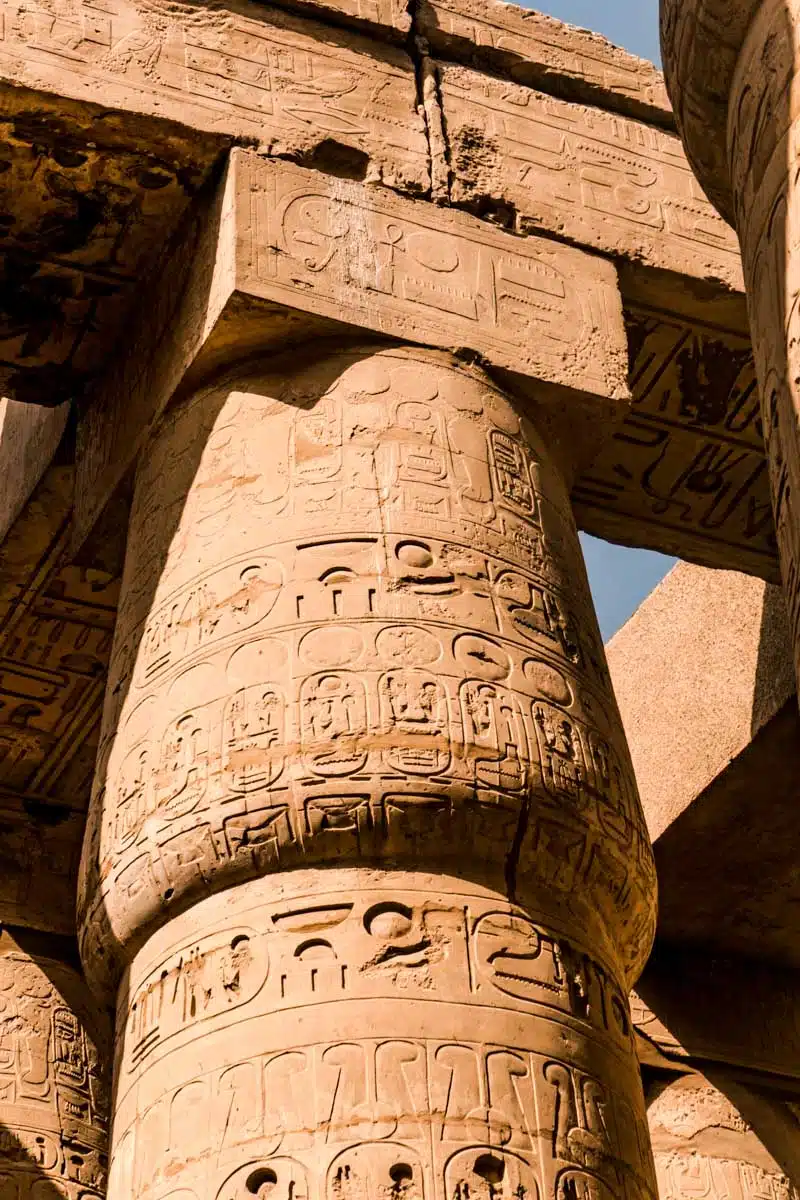
As Karnak is the second most visited tourist destination in Egypt, sans the Great Pyramids at Giza, you’re probably wondering how to visit it. Well, let’s have a look.
Visiting Karnak on a Tour
These are my recommendations for the best tours available:
- This full-day guided tour of Luxor is the perfect way to skip the line to experience Karnak, The Mortuary Temple of Hatshepsut, and the Valley of the Kings.
- This 15-hour excursion to the monuments at Luxor includes lunch and takes you to Karnak and other notable sites.
- Choose either a full or half-day guided tour of the East and West Banks of the Nile from Luxor.
- You can also book the Karnak Sound & Light Show – I didn’t get to try this while I was in Luxor but heard very good things
Visiting Karnak Temple Independently
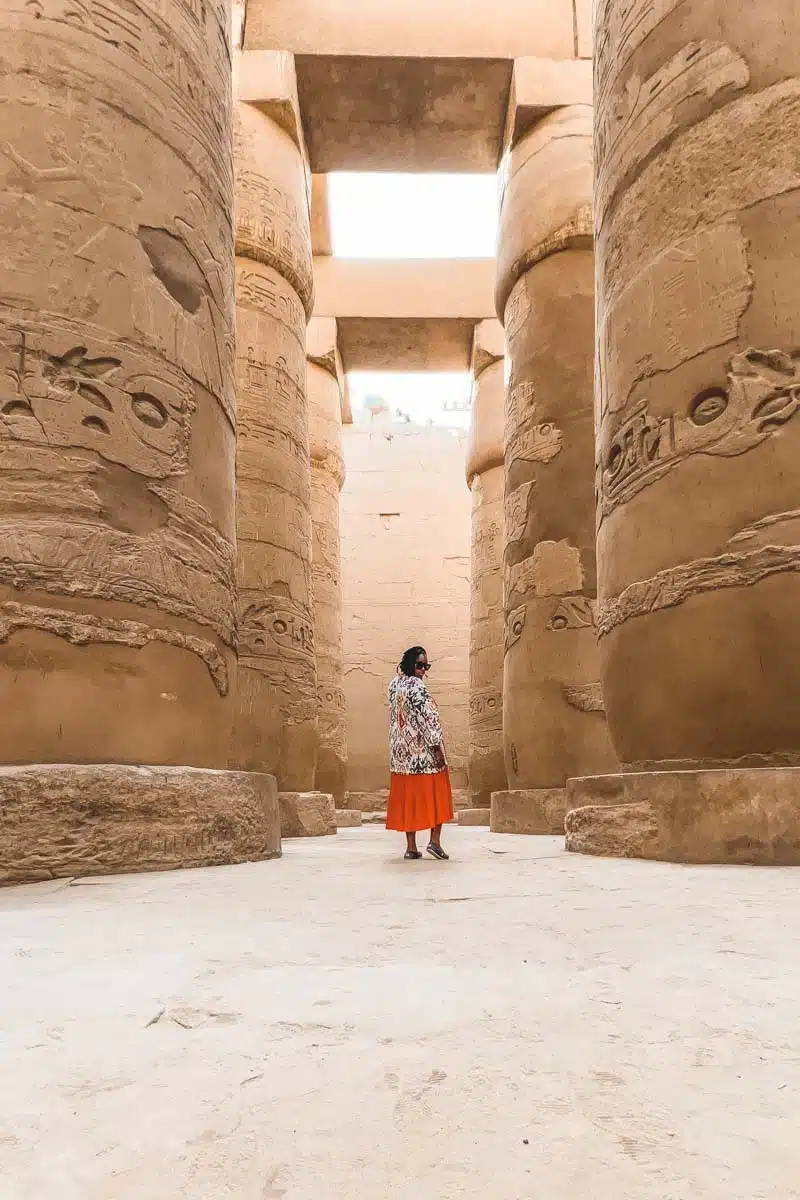
Although you get a lot more value out of a guided tour to Karnak, you can also choose to visit it solo. Luckily, Karnak is quite close to the city of Luxor, so you can opt to head to the site via taxi, bus, or rental car.
Ticket Prices for Karnak
To enter Karnak, you will have to purchase a separate entry ticket. Tickets cost £7 ($9) or £4 ($5) if you’re a student.
Where to Stay for Karnak Temple
Jolie Ville Hotel & Spa (Mid-Range – High-End)
The world-class, 5-star island resort of Jolie Ville sits on the East Bank of the Nile. This is the perfect accommodation for your trip to Karnak, situated on a private island surrounded by 165 acres of landscaped gardens.
With a stunning infinity pool on the edge of the Nile and ten different restaurants on-site, beyond your adventures to Karnak (only 4.5km from the resort), you have everything right here.
Karnak, Luxor: Address
Karnak, Luxor, Luxor Governorate, Egypt
Opening Times
Karnak Temple is open daily, with opening hours depending on the season:
- Summer & Spring: 6 am to 7 pm
- Winter & Autumn: 6 am till 5:30 pm
Karnak Temple: Map
Watch My Luxor Guide on Youtube!
Karnak Temple, Egypt: Read Next
- The Ultimate Luxor Travel Guide
- Visiting the Valley of the Kings
- Visiting Luxor Temple
- Why You Should Take a Hot Air Balloon in Luxor
- Nefertari’s Tomb – Visiting Egypt’s Most Opulent Tomb
- The Ultimate Egypt Travel Itinerary
- Top Tips for Planning Your Trip to Egypt
- The Best Things to do in Egypt
- The Insider’s Egypt Travel Guide
Love This? Save and Share on Pinterest
